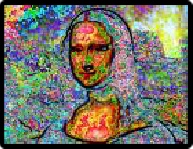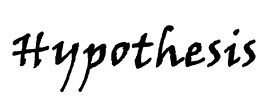
















NEXT
BACK
NEXT
BACK








Site Search
ABSTRACT ATOMS
Galileo presents his last thoughts on atom structure. In this hypothesis . . . Atoms are reduced to the mathematical abstraction of points, lacking any dimension, clearly indivisible and uncuttable, but devoid of the shapes that Democritus had envisioned.
—-
The God Particle
NATURE of INFORMATION
Now that we know what the term “information” means in various contexts, we’re almost ready to get into the specific usage of the word in the context of the various modern Information Sciences. But those functional definitions still don’t tell us what information is essentially–-
Most people tend to think of information in terms of the physical container rather than the metaphysical content: books, computers, or text, versus ideas, concepts, or meanings. The dictionary definition uses the terms: knowledge, facts, and data. But "knowledge" is defined as the state of "knowing", which is related to consciousness and awareness. These terms don't seem to be pointing to the physical stuff that we "know", but to the non-
Until the 20th century there was no imperative need for a more technical definition of Information. But in 1948 Claude Shannon, challenged by telephone and computer technology, had to get more specific in his paradigm-
For my own purposes, I define Information as "the immaterial quality of physical patterns and processes that stimulates meaning in a mind". So Information is a philosophical, metaphysical notion related to the spooky sphere of consciousness, which empirical science cannot deal with directly. Reductionist scientists in the early 20th century had defined Consciousness, and the information it works with, as an "epi-
However, toward the end of the 20th century, particle physicists were still breaking sub-
In the interest of brevity, I'll leave it up to the curious reader to search for other references to support these assertions. But here are a couple of examples: As mathematician Charles Seife put it in his book, DECODING THE UNIVERSE: "Underneath it all, our universe may be entirely shaped by information". And as Robert Aunger said in THE ELECTRIC MEME: "In fact, it is now believed that information may be the most basic concept in physics-
In the 21st century science of Systematics, another term has been coined to fit that same definition : Enformy. So I will use that word primarily in a narrow technical sense to indicate the opposite meaning from Entropy. But the Enformationism thesis intends to show that the stuff we think with, and take for granted, is ordinary and mundane and ubiquitous, rather than something remote & mysterious or applicable only to abstruse philosophical or religious topics. Though Information may be a common fact of life, it’s also unique in the sense that it doesn’t consist of matter or energy like the rest of reality. So what is Information, really? The next section will address that question within the context of this hypothesis. ●




LOGICAL CONSTRUCTS
Gell-
—-
The God Particle
EMERGENCE OF LIFE
Life may be . . . A joint production between information-
—-
Into The Cool